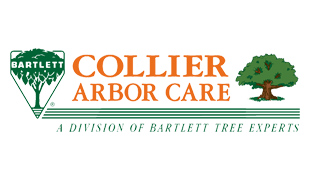|
Current Issue - Spring/Summer 2013 Show Back Issues |
| ||
Collier Arbor Care Recognized for Sustainability Practices
|
 Lichens and moss can capture valuable nutrients and make them available as food to wildlife. They do not feed off host plants as is commonly thought. Mosses and Lichens: Are They Harmful to Plants?Mosses and lichens grow profusely on trunks, limbs, and twigs of many trees and shrubs and wet areas of lawns. The cool, cloudy, wet weather in the Northwest is ideal for these organisms. In fact, they are present nearly everywhere that is shady and moist. Lichens and mosses grow all over the world and are used for dyes, animal fodder, decoration, medicines, and religious practices. Many people wrongly think that moss and lichen are harmful to plants. Contrary to popular belief, moss and lichen that colonize plants are not harmful to their hosts. In fact, they often capture valuable nutrients and provide food for wildlife. In scientific terms, they are not parasitic; taking nutrients from the host plants. But rather, they are epiphytes; a plant that derives its moisture and nutrients from the air and rain and merely grows on another plant or object. Lichens are perhaps some of the most amazing living things on Earth. Lichens have two components: a fungus and an algae living in a symbiotic (mutually beneficial) association with one another to give the appearance of a single plant. Lichens manufacture their own food, with the algal component supplying energy from photosynthesis, while the fungus provides protection. They occur in several forms: crusty or leaf like, while others resemble a tuft of horse hair hanging from branches. Mosses are green plants somewhat similar to algae except they have a complex structure that resembles stems and leaves. Because they contain chlorophyll, mosses can manufacture their own food. Japanese gardens delight in having moss grow on the soil or on the plants. If moss and lichen are found objectionable, you can prune the trees and plants to allow more light penetration and create a drier environment. However the best advice is to take delight in these special plants and enjoy the beauty and benefits they give your landscape. Tour des Trees 2012: Another Successful Ride“PNW and Terrill Collier promised the TREE Fund an epic ride in Oregon, and they delivered,” said TREE Fund President/CEO Janet Bornancin. “We closed registration six weeks ahead of schedule because we'd reached capacity. We had a strong group of rookie riders and our veteran riders couldn't wait to take on Oregon. Donations and sponsorships pushed this yearís revenues to $600,000, a new record for the event. This was a benchmark Tour from every perspective.”  Taking a break during the 585 mile Tour des Trees fundraising ride, the Colliers try out the Mastercraft “Defender” wooden bikes. The TREE Fund's mission is to support sustainable communities and environmental stewardship by supporting research, scholarships and education programs essential to the discovery and dissemination of new knowledge in the fields of arboriculture and urban forestry. The TREE Fund has supported research that has led to important developments in:
The Collier Team raised $14,000 during the grueling, but picturesque 585 mile ride through Oregon. Team riders included Terrill and Janet Collier, along with sons Brandon, Logan and Quentin. The Colliers began participating in the ride in 2002, embracing the Tour's commitment to education and community outreach. In addition to cycling through Oregon from Banks to the coast, through the Grand Ronde, up to Government Camp, out past The Dalles, and back again through the Columbia River Gorge, the riders stopped to plant trees, honor colleagues and teach the public about the importance of tree research. The 20th Anniversary Tour finished with an urban ride through Portland and a bottle of champagne from 1992's inaugural Tour des Trees, saved for this occasion by Ward Peterson, veteran of the 1992 and 2012 Tours.  Adult Lace Bug: so named for the lace-like network of veins on their translucent wings. Lace Bugs: Number One Shrub ProblemLacebug damage reached epidemic proportions this year becoming the number one insect problem on shrubs. Lacebugs are tiny one quarter inch long sucking insects that damage the foliage of azaleas, rhododendrons, andromeda and Indian plum (a common native shrub). The azalea lacebug was first discovered in our area in 2009 and is one of three closely related species of lacebugs attacking shrubs. They are named lace bugs for the lace-like network of veins on their translucent wings. They happen to be very beautiful to look at with a hand lens. Adults and nymphs suck the chlorophyll and plant sap from the underside of leaves. This causes the leaf to appear stippled with minute white spots. In severe infestations, the leaves appear white or bleached. These infestations may cause premature leaf drop, and even the death of small shrubs. The presence of these pests can also be determined by the black tar (fecal) spots they leave on the lower leaf surface. Host plants are more susceptible to lacebugs if planted in full sun and are subject to drought stress. Lace bugs overwinter in the egg stage and hatching occurs usually in May. The young nymphs pass through five feeding stages (molts) before becoming adults and forming wings. There are multiple generations per year continuing from late spring until fall. Because the adults have wings they spread easily from place to place. Soap and oil treatments will control lacebugs but it must come in contact with the insect during late spring early summer on the bottom side of the leaves directly. Oil treatments in the fall help to control overwintering eggs. Systemic products are very effective because they are absorbed into the foliage to control the sap sucking lacebugs. Contact us for a program to help protect your shrubs from this epidemic insect problem.  Black tar (fecal) spots from the lace bugs. |
|
Home |
Services |
The Arbor Advisor |
Garden Calendar |
About Us |
Fact Sheets |
Contact Us |
Site Map Collier Arbor Care Portland 503-722-7267 Vancouver (360) 693-6056 Site contents and design ©2013 Collier Arbor Care |







 Terrill Collier accepts the official Eco-Biz certification from Debra Taevs, Oregon Director of the Pacific Northwest Pollution Prevention Resource Center (PPRC). Collier is the first arborist to attain Eco-Biz certification under this program.
Terrill Collier accepts the official Eco-Biz certification from Debra Taevs, Oregon Director of the Pacific Northwest Pollution Prevention Resource Center (PPRC). Collier is the first arborist to attain Eco-Biz certification under this program.
 top »
top »